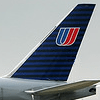
Sign in to follow this
Followers
0

Radar altimeter error
By
CaptKornDog, in FSX/FSX-SE Aircraft and Panel Design Forum - How To


By
CaptKornDog, in FSX/FSX-SE Aircraft and Panel Design Forum - How To